History
The aboriginals

 Hill the arrival of Christopher Columbus to Venezuela, the country was inhabited by the aboriginals, which were: in the Andes: the Timoto-Cuicas; In the West: the Pemones, Bobures, Motilones, Caquetíos, Jirajara-Ayamán and the Gayones; around the Maracaibo Lake: the Goajiros or Guajiros; in the East: the Caribes; in the llanos and Delta Orinoco: the Waraos; in the outlet of the Apure: the Otomacos, Guanos, Taparitas, and the Yaruros; and in the Amazones: the Yanomami.
Hill the arrival of Christopher Columbus to Venezuela, the country was inhabited by the aboriginals, which were: in the Andes: the Timoto-Cuicas; In the West: the Pemones, Bobures, Motilones, Caquetíos, Jirajara-Ayamán and the Gayones; around the Maracaibo Lake: the Goajiros or Guajiros; in the East: the Caribes; in the llanos and Delta Orinoco: the Waraos; in the outlet of the Apure: the Otomacos, Guanos, Taparitas, and the Yaruros; and in the Amazones: the Yanomami.
These aboriginals, depending of their geographical location, lived of hunting, fishing, harvest or agriculture.
Two worlds coming together
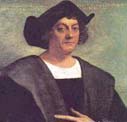
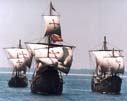 On October 12th 1492 Columbus arrives at the Americas, but it isn't until August 1498, on his third trip, that he came by the Venezuelan coast, entering through the peninsula of Paria , which he called “ Land of Grace ”.
On October 12th 1492 Columbus arrives at the Americas, but it isn't until August 1498, on his third trip, that he came by the Venezuelan coast, entering through the peninsula of Paria , which he called “ Land of Grace ”.
Afterwards Venezuela was being explored by Alonso de Ojeda and Américo Vespucci, who saw that the Indians at Lake Maracaibo built their houses on poles over the water, which made them think of Venice and they called this new land “Veneciola” ( little Venice), where the name Venezuela came from.
The conquest

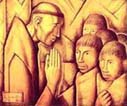 The era of the conquest was a hard time for the Venezuelan aboriginals, as the Spanish forced their language, their religion and their kingdom upon them, trying to impose their own culture on the aboriginals. Even though the original habitants of this land put up a lot of resistance, it wasn't enough because the Spanish came with horses, gunpowder and iron weapons, which was simply too much for the bow and arrow defense of the Indians. At the same time stood for the search for pearls and precious stones to be taken to the king of Spain as presents, showing they had hit rich soils. With the continuing of the conquest, the undermining of the aboriginals and the search for treasures, they formed new cities on the American continent. This way begins the settling on the island of Cubagua where the city of Nueva Cadiz was founded in 1528 in order to exploit the pearls in the region. In 1521 the city of Cumana was founded and in 1528 Coro and that way successively, until July 25 th 1567 the city of Santiago de Leon de Caracas is formed, the current capital city of Venezuela.
The era of the conquest was a hard time for the Venezuelan aboriginals, as the Spanish forced their language, their religion and their kingdom upon them, trying to impose their own culture on the aboriginals. Even though the original habitants of this land put up a lot of resistance, it wasn't enough because the Spanish came with horses, gunpowder and iron weapons, which was simply too much for the bow and arrow defense of the Indians. At the same time stood for the search for pearls and precious stones to be taken to the king of Spain as presents, showing they had hit rich soils. With the continuing of the conquest, the undermining of the aboriginals and the search for treasures, they formed new cities on the American continent. This way begins the settling on the island of Cubagua where the city of Nueva Cadiz was founded in 1528 in order to exploit the pearls in the region. In 1521 the city of Cumana was founded and in 1528 Coro and that way successively, until July 25 th 1567 the city of Santiago de Leon de Caracas is formed, the current capital city of Venezuela.
Colonization

 The colonial administration depended on the viceroyalty of Santa Fe de Bogota. The economy was based primarily on the exportation of coffee and cocoa and society was stratified by breed, based solely on a racial criteria. White Spaniards or peninsulars (born in Spain) were the most important class of people and controlled the colony, followed by the creoles, born out of Spaniards born in The Americas, then the Canaries or browns (mixes of whites, Indians and black people) and lastly the black and Indian slaves.
The colonial administration depended on the viceroyalty of Santa Fe de Bogota. The economy was based primarily on the exportation of coffee and cocoa and society was stratified by breed, based solely on a racial criteria. White Spaniards or peninsulars (born in Spain) were the most important class of people and controlled the colony, followed by the creoles, born out of Spaniards born in The Americas, then the Canaries or browns (mixes of whites, Indians and black people) and lastly the black and Indian slaves.
During the colonial era (between the 17th and 19th century) the economy of the region was primarily based on agriculture and its principal export products were coffee and cocoa. These exports, however, were illegal as Spain prohibited its colonies the commercialization of their products with other countries.
The most important countries that supported this smuggling were France , The Netherlands and England . Due to this grave problem Spain created the company Guipuzcoana in Caracas in 1728, whose obligation was to restrain the illegal export and to create a monopoly in the sale of products. They did such a good job that in 1777 almost all commercial activities of the colony took place in Caracas . The economy was raised even more when it became prestigious to have Venezuelan cocoa on Mexican and Spanish tables. Through this Venezuela ascended in importance and given the rank of Captain General with political-military authority and in 1786 receiving administrative and legal jurisdiction. Guipuzcoana existed until 1784 when the Spanish Royalty ordered their elimination.
In the beginning of the 19 th century the first steps towards Venezuela 's independence from Spain were given.
Independence
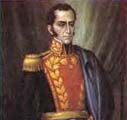
 In Venezuela a nationalistic feeling was developed and because of the continuing aggression of the Spaniards against creoles, colored people and Indians, constantly raised taxes, the desire for freedom of those that were held as slaves, etc. a number of social revolutions were produced to protest against the tax laws of the Spaniards.
In Venezuela a nationalistic feeling was developed and because of the continuing aggression of the Spaniards against creoles, colored people and Indians, constantly raised taxes, the desire for freedom of those that were held as slaves, etc. a number of social revolutions were produced to protest against the tax laws of the Spaniards.
The first attempt for independence was realized by Manuel Gual and Jose Maria España, in 1797. Their project was based on the idea of the French Revolution that came from France , where, among others, an equal society was proclaimed and a divided society was rejected. This attempt was discovered and they had to escape the country. Afterwards the second important attempt was realized in 1806 by Francisco de Miranda who had collaborated with the revolution that liberated the United States and who had participated in the French Revolution together with Napoleon. Miranda was a white Creole (born in Venezuela , son of a Spaniard) and after having sought support in Europe and having planned his revolution, he made his first attempt in coming to Venezuela through Ocumare but he was attacked and couldn't get of the ship having to flee to Trinidad . Four months later he tried to get ashore at Coro , where he could wave the Venezuelan flag that he had created for his country, for the first time. The people, however, were not ready for his plans and he had to leave the country again. This time he went to London where he met Simon Bolivar who was looking for support for the battle for the independence of South America.
In 1808 France intervened Spain and Napoleon Bonaparte named his brother José Bonaparte King of Spain, a joint moment for Spain 's colonies in Latin America . At this point they were under control of the Captain General of Venezuela , Vicente Emparan, who had been chosen by the French for this job. He stayed, however, loyal to his former King, Fernando the 7 th . On April 19 th 1810 the Venezuelan people took advantage of the chaos ruling in Spain , saying they wanted to form an assembly to maintain King Fernando's rights, to which Vicente Emparan opposed. Searching support from the people he appeared on the city hall balcony asking the people if they were happy with his government. Behind him is standing Malariaga who is signing the people to answer no and this is what starts the rumor that Amparan responds that he doesn't want to govern them anyway and shouts he quits. This is how Venezuela starts its independence from Spain . Finally on July 5 th of 1811 independence is declared and the first Republic of Venezuela is formed. However, things did not end here. Between 1811 and 1823 numerous battles are fought, also because Fernando the 7 th was back in power in Spain and wanted all lost colonies back. The decisive one was the battle of Carabobo on June 24 th 1821 and the cycle was closed with the naval battle of the Lake of Maracaibo on July 24 th 1823.
Great Colombia

 On December 17 th 1819 Simon Bolivar forms Great Colombia, existing of current Colombia , Venezuela and Ecuador . This dream of the freedom fighter did not last long due to the big differences between the 3 countries, the problems of governing such a huge territory, the wish of freedom of each region and problems of an economic nature. In 1830 Venezuela and Ecuador separate themselves from this idea of Bolivar, dissolving it altogether.
On December 17 th 1819 Simon Bolivar forms Great Colombia, existing of current Colombia , Venezuela and Ecuador . This dream of the freedom fighter did not last long due to the big differences between the 3 countries, the problems of governing such a huge territory, the wish of freedom of each region and problems of an economic nature. In 1830 Venezuela and Ecuador separate themselves from this idea of Bolivar, dissolving it altogether.
The Civil War
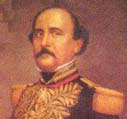
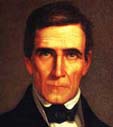 Alter 1830 Venezuela starts its political life, which never ceases to be influenced by the heritage of the Spaniards and between 1859 and 1863 a civil war goes on between the Conservatives, that wish maintain slavery (which was abandoned in 1854), and the social and liberal stream from society. This battle is won by the liberals who get rid of the death penalty, declare the right to vote, freedom of speech, the right to own property, among others.
Alter 1830 Venezuela starts its political life, which never ceases to be influenced by the heritage of the Spaniards and between 1859 and 1863 a civil war goes on between the Conservatives, that wish maintain slavery (which was abandoned in 1854), and the social and liberal stream from society. This battle is won by the liberals who get rid of the death penalty, declare the right to vote, freedom of speech, the right to own property, among others.
Presidents of Venezuela
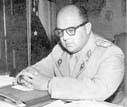
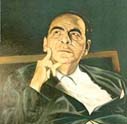 Alter the Civil War Venezuela is sometimes governed by the Conservatives and sometimes by the Liberals. An important role is played by Antonio Guzmán Blanco (liberal), who governs the country on 3 occasions, always with a progressive view and a lot of French influence. Among his most important works are: the founding of the national hymn, the creation of a railway between Caracas and La Guaira, the foundation of the Venezuelan Academy of Languages, improvement of the infrastructure and communication of the country, telephone service, declaration of the Bolivar as the official currency, making the metric system the official one, declaring education public and obligatory, and the creation of important works such as: el Panteón Nacional, el Capitolio and el Teatro Municipal, among others.
Alter the Civil War Venezuela is sometimes governed by the Conservatives and sometimes by the Liberals. An important role is played by Antonio Guzmán Blanco (liberal), who governs the country on 3 occasions, always with a progressive view and a lot of French influence. Among his most important works are: the founding of the national hymn, the creation of a railway between Caracas and La Guaira, the foundation of the Venezuelan Academy of Languages, improvement of the infrastructure and communication of the country, telephone service, declaration of the Bolivar as the official currency, making the metric system the official one, declaring education public and obligatory, and the creation of important works such as: el Panteón Nacional, el Capitolio and el Teatro Municipal, among others.
In 1908 Juan Vicente Gómez gives a coup d'etat to who was president at the time, Cipriano Castro, who was leading a democratic but authoritarian government. At first, the Venezuelan people thought Gómez was saving them from the totalitarian government of Castro but later he made it clear that he had installed a dictatorship in Venezuela . He was in power from 1908 till 1935. His government always had the disguise of a democracy but he really altered the constitution to longer in power and installed puppet presidents for short terms, which he controlled completely. During the government of the general oil as found in Venezuela , this caused international companies to enter the country to exploit it. Gómez wastes and embezzles the money of the government without any explanations to anyone and without paying of the country's debts. During his government numerous roads were built (made by prisoners), aviation and air mail was created, airports were built, the Armed Forces were formed as well as the Military Academy .
In 1935 General Juan Vicente Gómez dies and with him the strong dictatorships in Venezuela.
This period is followed by 12 years in which Venezuela strengthens democracy due to presidents like: Eleazar López Contreras (1935 – 1941) who, among other things, reinstalled political parties, freedom of speech, announced a new labor law, and established an obligatory social security; Isaías Medina Angarita (1.941 – 1.945) who was brought down by a coup for not allowing the constitution to be changed so that direct elections could be held instead of elections through Congress; Rómulo Betancourt (1.945 – 1.948) who lead a revolutionary government; Rómulo Gallegos (1.948 – 1.948), the first president to be chosen through direct elections; Carlos Delgado Chalbaud (1948 – 1.950), who came to power after heading a military assembly that overthrew a democratically chosen government and Germán Suárez Flamerich (1.950 – 1.952) who came to govern due to the assassination of Delgado Chalboud.
In 1952 new elections are held and Jóvito Villalba is elected president. He is, however put into jail and forced to leave the country with General Marcos Pérez Jiménez taking office and this way enforcing the last dictatorship in Venezuela.
Pérez Jiménez governs from 1952 till 1958, a period again marked by political prisoners but also for great works like: highways like the one connecting Caracas and La Guaira, the university city, the torres del Silencio the cable car systems of EL Avila and in Merida, the neighborhood 23 de enero, el paseo de Los Proceres, etc. modernizing the country. However, the country, especially the big middle class, woke up little by little and decided to insubordinate and in order to avoid elections Marcos Pérez Jiménez called out a referendum to be reelected. The people, having lost their fear to demonstrate provoked the escape of the man who had been president from February 23 rd 1958, ending dictatorships in Venezuela.
From this moment on there has been 40 years of uninterrupted democracy with: Wolfgang Larrazábal (1958 – 1959), Edgar Sanabria (1959 – 1959), Rómulo Betancourt (1959 – 1964), Raúl Leoni (1964 – 1969), Rafael Caldera (1969 – 1974), Carlos Andrés Pérez (1974 – 1979), Luis Herrera Campins (1979 – 1984), Jaime Lusinchi (1984 – 1989), again Carlos Andrés Pérez (1989 – 1993), Ramón José Velásquez (1993 – 1994), again Rafael Caldera (1994 – 1999), Hugo Chávez (1999 – 2002), Pedro Carmona Estanga (2002 – 2002), Diosdado Cabello (2002 – 2002) and Hugo Chávez (2002 - today).





 Travel Bag (Empty)
Travel Bag (Empty)
